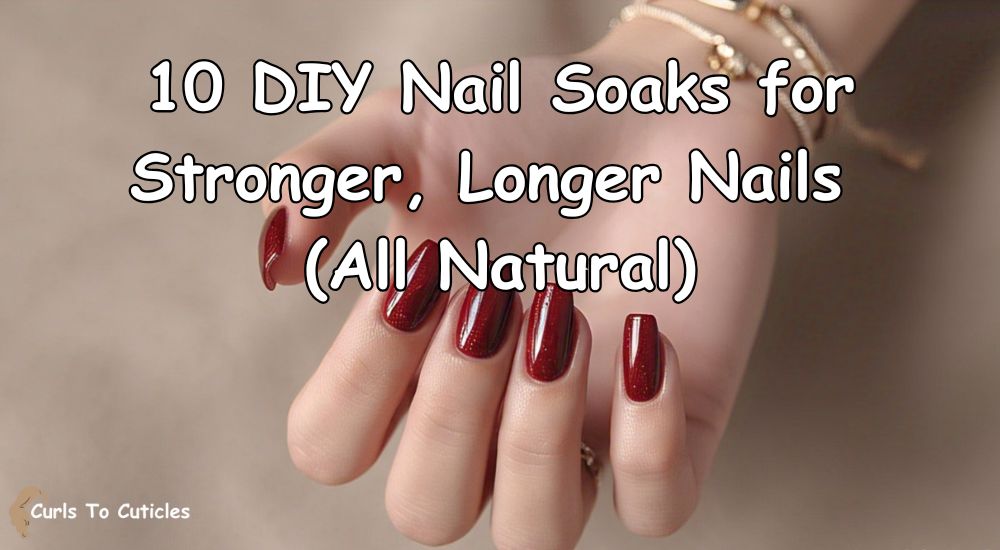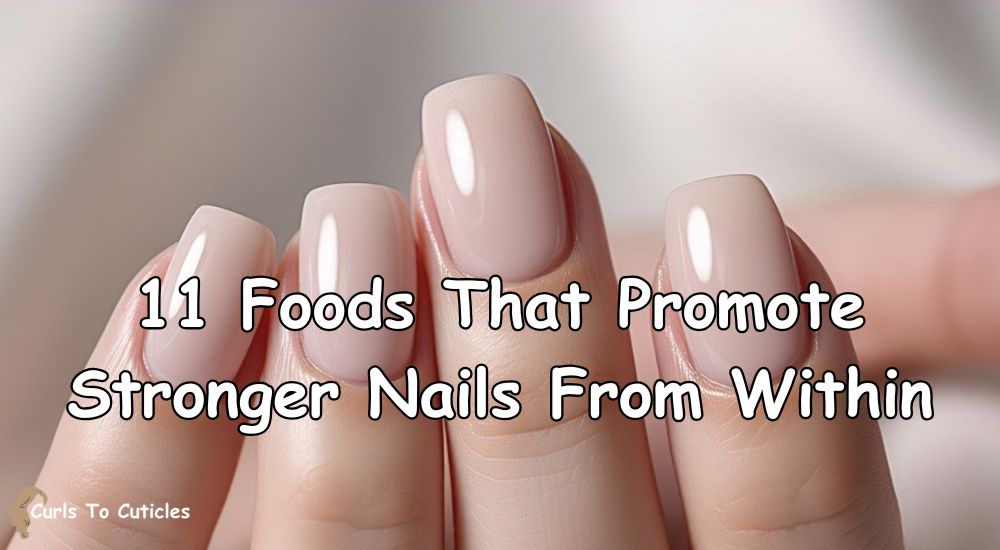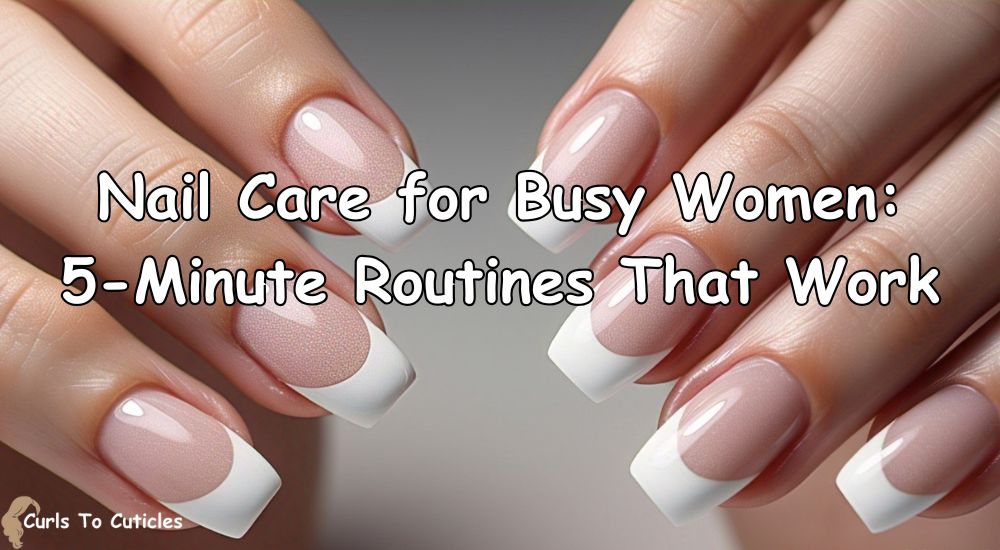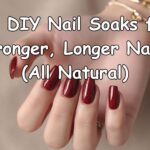Now Reading: You’re Damaging Your Hair Every Morning. (Without Realizing It)
-
01
You’re Damaging Your Hair Every Morning. (Without Realizing It)
You’re Damaging Your Hair Every Morning. (Without Realizing It)

Many people follow the same morning hair routine every day. I used to do the same without thinking twice. I brushed, styled, sprayed, and rushed out the door. But over time, my hair became dry, frizzy, and dull. I didn’t know I was causing damage just by doing my usual steps.
After learning more, I realized that small daily habits could be the reason my hair wasn’t growing properly or looking healthy. In this article, I’ll explain the common mistakes I made, what I do now, and how you can protect your hair every morning.
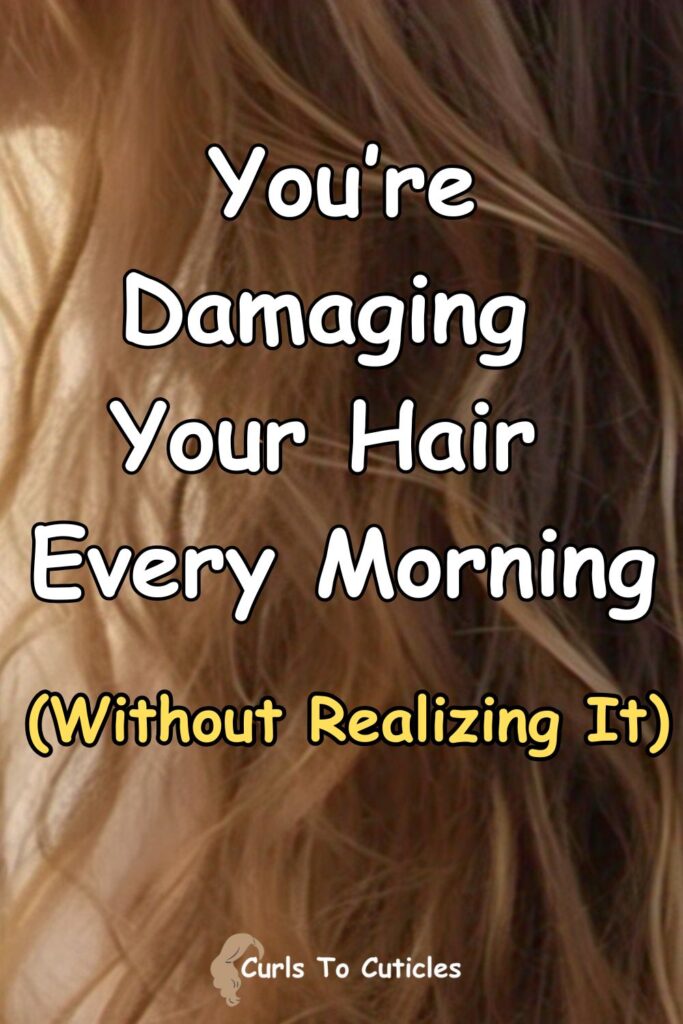
1. Brushing Wet Hair the Wrong Way
What I Used to Do:
The moment I stepped out of the shower, I’d reach for my regular paddle brush and run it through my soaking wet hair. It felt like the quickest way to detangle and get on with my morning. I didn’t think twice about it—I figured hair is hair, wet or dry.
Why That Was a Problem:
What I didn’t realize is that wet hair is especially fragile. When it’s saturated, the strands swell and stretch, making them much more vulnerable to damage. Dragging a standard brush through those tangles would tug hard on the roots and snap strands in the process. This constant stress on the hair shaft eventually led to more breakage, split ends, and thinning, especially near the bottom half of my hair. Over time, my hair lost its bounce and started to look dull and frayed.
What I Do Now:
Now, I give my hair a fighting chance. I start with a microfiber towel to gently squeeze out excess water (no rough towel-drying!). Then I apply a leave-in conditioner or detangling spray to add slip. Instead of a harsh brush, I use a wide-tooth comb or a detangling brush specifically made for wet hair. I always begin at the ends, slowly working my way up to avoid unnecessary pulling. It takes a bit longer, but my hair has thanked me with less breakage and a lot more shine.
2. Skipping Heat Protection
What I Used to Do:
Whenever I styled my hair—whether blow-drying, straightening, or curling—I didn’t bother with a heat protectant. I thought it was an extra, unnecessary step. It felt like one more product to add to my routine, and honestly, I doubted it even worked.
Why That Was a Problem:
Big mistake. Heat tools can reach temperatures high enough to literally boil the water inside your hair shaft, leading to cracks in the cuticle. Without a protective barrier, the direct heat weakens the hair’s outer layer, causing split ends, frizz, dullness, and that straw-like texture that’s hard to fix. I didn’t notice the damage right away, but it built up silently—until my hair just wouldn’t cooperate anymore. No amount of styling could hide the breakage.
What I Do Now:
Now, I never skip this step. Before using any heat tool, I mist on a thermal protectant spray or use a cream formula if I’m blow-drying. I make sure it’s labeled to protect up to 450°F. It forms a shield that slows down moisture loss and helps prevent that dry, scorched look. The difference is huge—my hair feels softer, holds style better, and looks healthier even after using heat. It’s a two-second step that saves me from long-term damage.
3. Using High Heat Every Day
What I Used to Do:
My flat iron was always cranked to the highest temperature, usually around 450°F. I thought the hotter it was, the quicker and sleeker my results would be. I used it daily—even on already straightened hair—to keep flyaways in check.
Why That Was a Problem:
Turns out, more heat doesn’t mean better results—it just means more damage. High heat removes the natural moisture from your hair and damages the keratin structure. The strands become weaker, stiffer, and more prone to breaking. Daily exposure doesn’t give your hair time to recover, and over time, I ended up with dry, brittle sections that no amount of deep conditioner could fix. My hair looked fine in the moment, but the long-term effects were undeniable.
What I Do Now:
Now, I dial it back—literally. I only use heat styling tools two or three times a week, max. I also reduced the temperature to the lowest setting that still gives me the look I want—usually around 300°F or less. I focus on using heat strategically instead of as a daily habit. Plus, I give my hair time to air-dry on wash days and style it in no-heat waves or protective styles when I can. This has not only minimized damage but also improved the overall texture and resilience of my hair.
4. Towel Drying With Rough Towels
What I Used to Do:
After washing my hair, I used a regular cotton bath towel and rubbed my head vigorously. I believed the faster I dried my hair, the better. It was part of my routine, and I didn’t think it could cause harm.
Why That Was a Problem:
Rough towel fabric is too harsh for wet hair. The friction from rubbing lifts the hair cuticle, making strands frizzy and prone to breakage. Because wet hair is already fragile, this extra stress causes long-term damage. I noticed more split ends and a dull texture, especially around the top layer of my hair.
What I Do Now:
I switched to using a microfiber towel or a soft cotton t-shirt. These are gentle on my hair and reduce frizz. Instead of rubbing, I gently squeeze the water out, pressing in sections. This keeps the hair cuticle smooth and helps my hair dry without looking rough or puffy.
5. Pulling Hair into Tight Ponytails
What I Used to Do:
Every morning, I pulled my hair into a tight ponytail or bun. I used regular elastic bands to keep everything in place. It felt clean and controlled, especially when I was in a rush.
Why That Was a Problem:
Tight hairstyles pull on the scalp and stress the hair at the roots. Over time, this tension can cause breakage—especially near the hairline and temples. Constant pressure in the same spot may even lead to thinning or traction alopecia. I started noticing short, broken hairs near my forehead.
What I Do Now:
I now wear my hair in looser styles. I switch between low ponytails, soft braids, and messy buns to avoid constant pressure in one area. I also use fabric-covered scrunchies or spiral hair ties. These hold my hair gently without pulling or snagging. Since making the change, my hairline looks fuller, and I see less breakage.
6. Using Dirty Hair Tools
What I Used to Do:
I used the same brush, flat iron, and curling wand daily without cleaning them. I figured tools didn’t need cleaning unless they looked visibly dirty.
Why That Was a Problem:
Hair tools collect product residue, oil, dead skin, and dust. Every time I used my dirty brush or heat tool, I unknowingly transferred all that buildup back to my clean hair. This made my scalp feel itchy and my hair greasy sooner. The buildup also affected how well my tools worked.
What I Do Now:
Now, I clean my brushes once a week. I remove hair from the bristles daily, then soak them in warm soapy water once a week. For my heat tools, I wipe them with a damp cloth or alcohol wipe after each use (when they’ve cooled down). Clean tools help my hair stay fresh, and my styling tools work better without any sticky buildup.
7. Overusing Dry Shampoo
What I Used to Do:
On days when I didn’t have time to shower, I sprayed dry shampoo all over my roots. I sometimes went three or four days without washing, relying only on dry shampoo to keep my hair looking clean.
Why That Was a Problem:
Dry shampoo does not clean the scalp—it only absorbs surface oil. When used too often, it builds up on the scalp and clogs hair follicles. This can lead to flakes, irritation, and even hair thinning over time. My scalp felt itchy, and my hair started to look dull and lifeless, even right after using it.
What I Do Now:
I limit dry shampoo use to once or twice between full washes. I spray only at the roots and brush it through well. I also make sure to wash my hair thoroughly with a cleansing shampoo afterward to remove any residue. This keeps my scalp healthy and lets my hair breathe.
8. Ignoring the Scalp
What I Used to Do:
When I styled my hair, I focused only on how it looked. I didn’t pay any attention to the condition of my scalp. I thought healthy hair was just about the strands.
Why That Was a Problem:
Neglecting the scalp causes long-term problems. Dirt, oil, and leftover product can clog pores and block new hair growth. Dryness or buildup on the scalp also leads to itching, flakes, and weaker roots. My hair started thinning in some areas, and I didn’t know why.
What I Do Now:
I now treat my scalp with the same care as my skin. I gently massage it every morning with my fingertips for a few minutes. This helps boost blood flow and feels relaxing. Once a week, I use a scalp scrub or brush to remove dead skin and buildup. My hair feels stronger, and I’ve noticed less shedding.
9. Washing Hair Every Morning
What I Used to Do:
I used to wash my hair every single morning without fail. I believed that clean hair meant washing daily, especially if I wanted it to smell fresh and look shiny.
Why That Was a Problem:
Washing too often strips away the scalp’s natural oils. This dries out the hair and sends signals to the scalp to produce more oil. The result? Oily roots and dry, brittle ends. My hair started to look greasy faster, which made me wash it even more often—a frustrating cycle.
What I Do Now:
I now wash my hair only two to three times a week. On days I don’t wash, I rinse with cool water or use a light conditioner on the ends to freshen up. My scalp feels balanced, my hair isn’t greasy as quickly, and my ends are much softer.
10. Using the Wrong Shampoo
What I Used to Do:
I chose shampoo based on how good it smelled or how cheap it was. I didn’t check the label or think about what my hair actually needed.
Why That Was a Problem:
Many shampoos contain harsh ingredients like sulfates that strip natural oils. If the formula doesn’t match your hair type, it can cause dryness, oil imbalance, or even irritation. My hair became frizzy, flat, or too oily depending on what I used.
What I Do Now:
I read the ingredients before buying. I use sulfate-free shampoos for gentle cleansing. I pick formulas based on my hair needs. If my scalp feels dry, I use moisturizing shampoo. If I feel buildup, I use a clarifying shampoo once a month. My hair is easier to manage and feels healthier.
11. Combing From the Roots Down
What I Used to Do:
After showering or when styling, I brushed my hair from the roots straight to the tips. I didn’t think about how it tugged or pulled.
Why That Was a Problem:
Brushing this way causes the knots to bunch up, making tangles worse. It puts stress on the roots and leads to breakage. If the hair is wet, it’s even more fragile and breaks easily.
What I Do Now:
I always start from the ends and move upward in small sections. This gently works out tangles without yanking. I also hold each section with one hand while brushing to avoid pulling on my scalp. My hair breaks less and feels smoother.
12. Not Drinking Enough Water in the Morning
What I Used to Do:
I skipped water in the morning and went straight for my coffee or tea. I didn’t think hydration affected my hair.
Why That Was a Problem:
Lack of water affects the body and hair. When the body is dehydrated, it prioritizes vital organs. Hair becomes dry, brittle, and dull because it doesn’t get enough moisture from within.
What I Do Now:
I drink a full glass of water as soon as I wake up. It rehydrates my body after sleep and gives my hair a better chance to stay soft and strong. I’ve noticed less dryness and more shine since making this small change.
13. Sleeping on Cotton Pillowcases
What I Used to Do:
I always used regular cotton pillowcases and thought nothing of it—until I noticed my hair looked wild and tangled every morning.
Why That Was a Problem:
Cotton creates friction and roughs up the hair cuticle while you sleep. It also absorbs your hair’s natural moisture, leaving it dry and frizzy by morning.
What I Do Now:
I switched to satin or silk pillowcases. They’re much smoother and help my hair glide instead of tangle. I wake up with softer, less frizzy hair that’s easier to style.
14. Skipping Morning Moisture
What I Used to Do:
After brushing, I’d just leave my hair as-is and move on with my day. I didn’t think it needed any extra product.
Why That Was a Problem:
Hair loses moisture overnight. If I didn’t hydrate it in the morning, it felt dry and brittle. That made it more prone to breakage, especially when using heat tools or tying it up.
What I Do Now:
I apply a lightweight leave-in conditioner, serum, or a bit of hair oil—especially to my ends. This helps seal in moisture, adds shine, and protects my strands throughout the day.
15. Rushing Through Your Routine
What I Used to Do:
Mornings were busy, so I rushed through brushing and threw my hair into a quick ponytail without thinking much about it.
Why That Was a Problem:
Hasty brushing leads to pulling and breakage. Tight hairstyles stress the roots, and skipping small steps like moisturizing or detangling properly adds up to long-term damage.
What I Do Now:
I give myself just 10 extra minutes in the morning to care for my hair gently. I brush slowly, apply a leave-in, and choose styles that are both cute and protective. Taking my time has made my hair stronger and easier to manage.
Final Tips That Help Me Protect My Hair Daily
1. I use products with simple, nourishing ingredients.
I check the labels and go for shampoos, conditioners, and serums that are free from sulfates, parabens, and alcohols. Natural oils like argan, coconut, or jojoba are my go-to. Avoiding harsh ingredients keeps my hair healthier in the long run and prevents buildup or irritation.
2. I treat my hair like delicate fabric.
Just like I wouldn’t wring out or scrub silk, I don’t yank, twist, or aggressively towel-dry my hair. I use gentle motions when brushing and styling, and I’m always mindful not to stress it with rough handling or too much heat.
3. I let my hair rest between styles.
Instead of constantly heat styling or tying it up tightly, I give my hair downtime. I opt for no-heat styles, leave it loose, or use protective styles. This helps reduce breakage and gives my hair a chance to repair and grow stronger.
4. I stay consistent.
I’ve learned that healthy hair is about regular care, not quick fixes. I stick with my routine, stay patient, and give my hair the attention it needs. Over time, the results show—my hair is shinier, softer, and breaks less.
Download This Below infographic For Future Use
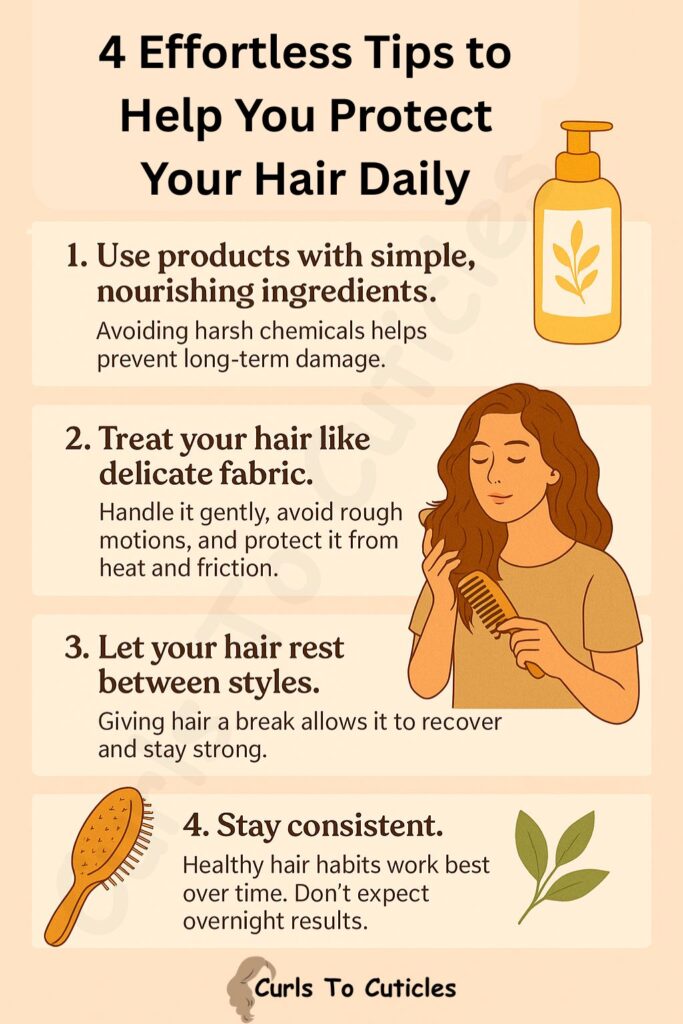
Summary
Most of the damage I caused to my hair happened during my morning routine. I didn’t realize that small habits—like brushing wet hair, skipping heat protection, or using tight hairstyles—were making my hair weaker each day.
Now that I’ve changed these habits, my hair is stronger, longer, and easier to manage. If you’ve been doing the same things without thinking, try adjusting your routine. Simple changes like using the right tools, applying heat protection, and giving your hair a break can make a big difference.
Start with one or two changes and build from there. Your hair will thank you.

Hi, I’m Mia Sophia, a 31-year-old hair and nail care enthusiast from a small town in Tennessee. I love testing products, creating simple DIY treatments, and sharing what works through my blog. Everything I post is based on real experience and a love for everyday self-care. Whether it’s finding the right shampoo or growing stronger nails, I keep it easy, honest, and helpful.


